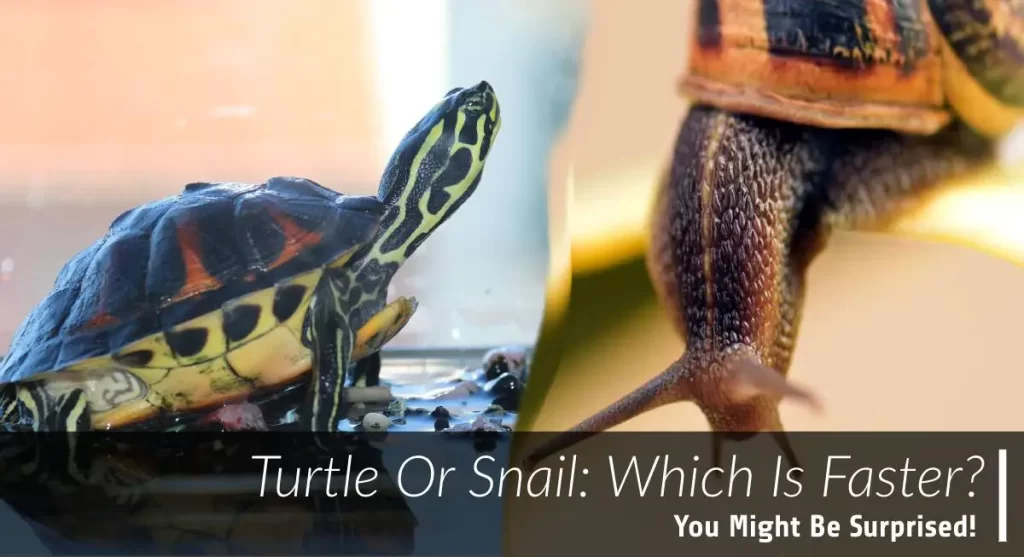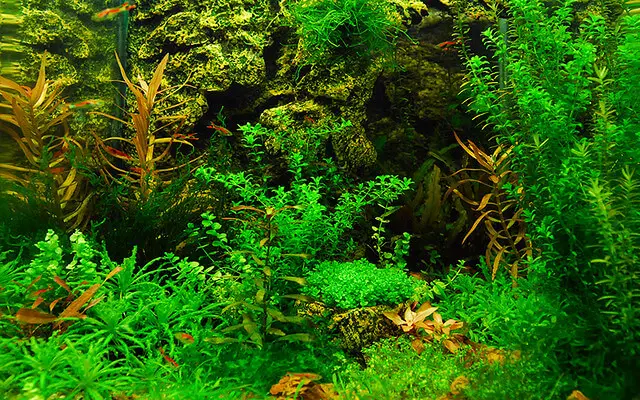If you are ever feeling down and need a little pick-me-up, I suggest you ask yourself this question: which is faster – a turtle or a snail? You might be surprised by the answer!
The answer to this question is not as straightforward as you might think. In fact, there are a few factors that we need to take into account when trying to determine who is faster – a turtle or a snail. Size and weight, how much distance they can cover in a day, and whether they are on land or in water all play a role in determining which of these creatures is the speed king! Keep reading to learn more about turtles and snails – who will come out on top?
In this blog post, we will take a look at the size, weight, speed, and movement of both turtles and snails. We will also explore the differences between these two creatures. So, without further ado, let’s get started!
Turtle Or Snail: Which Is Faster?
To answer this question, we need to consider a few factors. Let’s start with size and weight. Garden snails can grow to be about four inches long and weigh around two ounces. Turtles, on the other hand, can range in size from four to eight inches long and can weigh up to three pounds. So, when it comes to size and weight, turtles have a clear advantage.
But how does this affect their speed? Garden snails can move at a speed of 0.029 miles per hour, whereas turtles, on average, can cover 0.17 miles per hour. So despite comparing their pace in decimals, turtles are actually quite a bit faster than snails!
When it comes to being a good swimmer, turtles have one of the best records in water. They can travel up to 6 miles per hour and even faster when drifting with sea currents!
Sea turtles are agile swimmers that don’t tire easily – they’re 4 times as fast on average as land-dwellers like you or me. But this agility really shines during drift swimming, where these creatures may cover incredible distances without ever feeling fatigued at all (or, if we do happen, our pace).
Can Snails Swim?
Now that we know how fast snails and turtles can move on land let’s take a look at their speed in the water. Can snails swim? The answer is no – they are not able to swim. In fact, they can only move around in the water by using a floating device, such as a piece of wood or leaves.
Similarly, there are some snails like the sea hare snails that can inflate their bodies with air or water to help them float, but they are not able to swim either.
Why is My Aquarium Snail Floating? Should I Be Worried? Find out more on this.
Can Turtles Swim?
Turtles, on the other hand, are excellent swimmers! In fact, some turtles, like sea turtle, spend most of their time in the water. They are able to swim using their webbed feet and paddle-like tails.
Turtles, on the other hand, are excellent swimmers! They can reach speeds of up to 0.62 miles per hour in water. So if we’re comparing speed on both land and water, turtles are the clear winner.
How Fast Can Snails Move?
As we mentioned earlier, snails can move at a speed of 0.029 miles per hour on land. But how do they move so slowly? Garden snails have a large foot that helps them travel over smooth surfaces. This foot is also covered in mucus, which helps the snail move by reducing friction.
How Fast Can Turtles Move?
Turtles can move quite quickly on land, thanks to their strong legs and claws. They can reach speeds of up to 0.17 miles per hour on land – that’s more than twice as fast as a snail! They can run 3 to 4 miles an hour when it comes to saving their lives.
Turtle Vs. Snail: Size And Weight
When it comes to size and weight, turtles have a clear advantage. Garden snails can grow to be about four inches long and weigh around two ounces, whereas turtles can range in size from four to eight inches long and can weigh up to three pounds. So, when it comes to size and weight, turtles have a clear advantage.
Generally speaking, turtles are larger and heavier than snails. A typical adult turtle can weigh anywhere from 0.25 to 200 pounds (0.11 to 90.72 kg), with the heaviest species being the leatherback sea turtle.
The largest recorded turtle was a leatherback that weighed in at an impressive 1400 pounds (900 kg)! They are usually 6.56 feet long.
Syrinx aruanus, the largest snail species, can grow to be 35 inches long and weigh up to 40 pounds with its shell.
The average size of both species is small, but most turtles grow to about 10-12 inches long. Despite this lack in height compared with their snail counterparts, which can only get up a couple of inches tall on average!
Despite having more body weight and being slower due primarily to their large size relative to the smaller snails. Turtles are definitely faster because they’re squatting while racing around looking for food or refuges from predators.
How Much Distance Can Turtle and Snail Cover In A Day If They Are On Land?
Who would win in a race, a turtle or a snail? Most people would probably say the turtle, and they’d be right! Turtles can cover 0.17 miles per hour on average, whereas garden snails move at a speed of just 0.029 miles per hour.
So despite comparing their pace in decimals, turtles are actually quite a bit faster than snails. Of course, there are always exceptions to the rule – some turtles may be slower than some snails – but on average, turtles are the clear winner when it comes to speed on land. So next time you’re in a hurry, remember that even a turtle can outpace you!
Turtle Vs. Snail: How Much Distance Can They Cover In A Day If They Are In Water?
In water, turtles are the clear winner when it comes to speed. They can swim at speeds of up to 0.62 miles per hour, whereas snails cannot swim at all – they can only float around using a piece of wood or leaves.
Water current is a strong factor to consider when it comes to the swimming speed of a turtle or snail. If the water is flowing quickly, then the snail will be pushed along with the current and might even float on top of the water.
How Do Snails Move?
Garden snails have a large foot that helps them travel over smooth surfaces. This foot is also covered in mucus, which helps to reduce friction. The snail’s slimy trail also serves as a lubricant, making it easier for the snail to move around.
In addition, the mucus helps to protect the snail’s foot from abrasions and injury. Garden snails are often compared to turtles because of their slow pace and methodical movements. However, unlike turtles, snails are able to move quite quickly when necessary.
When threatened, a garden snail will retract its foot into its shell and secrete a sticky substance that helps to seal the opening. This mucus-like substance also makes it difficult for predators to remove the snail from its shell. As a result, garden snails have evolved a variety of strategies for defending themselves against predators.
Why is calcium important for shrimps? Get some idea about it here!
How Do Turtles Move?
Turtles are interesting creatures that use their strong legs and claws to move around on land. In water, they use their webbed feet and paddle-like tails to swim.
When turtles are moving slowly, they often drag their tails behind them. This is not their only means of locomotion, however. Some turtles are also able to climb trees! This ability allows them to escape predators and find food sources that would otherwise be out of reach.
Similarly, turtles can use their shells as tools for digging or for moving objects. The turtle’s shell is not just for protection – it is a versatile tool that the turtle can use in a variety of ways.
FAQ
What’s the Difference Between a Turtle and a Snail?
The main difference between a turtle and a snail is that turtles are able to move much faster than snails, both on land and in water. Turtles also have a shell that protects them from predators, whereas snails do not.
There are several key differences between turtles and snails. Firstly, turtles are much faster than snails, both on land and in water. Secondly, turtles are larger and heavier than snails. Thirdly, turtles have strong legs and claws that help them move around, whereas snails have a large foot that is covered in mucus. Finally, turtles can swim, but snails cannot.
Conclusion
In conclusion, there are several key differences between turtles and snails. Turtles are faster than snails, both on land and in water. Turtles are also larger and heavier than snails. Turtles have strong legs and claws that help them move around, whereas snails have a large foot that is covered in mucus. Finally, turtles can swim, but snails cannot.
Thanks for reading! We hope you found this article helpful. If you have any questions, please feel free to contact us. Have a great day!
Related articles:






